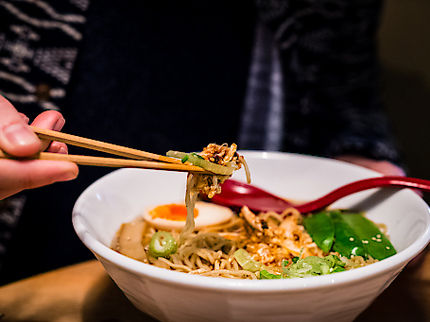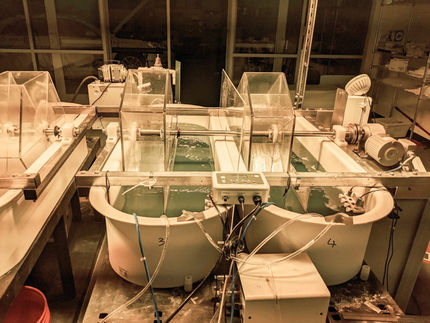Algae and insects: From hype to a real alternative
Advertisement
algae and insects are rich sources of protein - for humans and livestock. But until they are on the daily menu or food plan, it still takes a lot of effort. But the work is worth it.
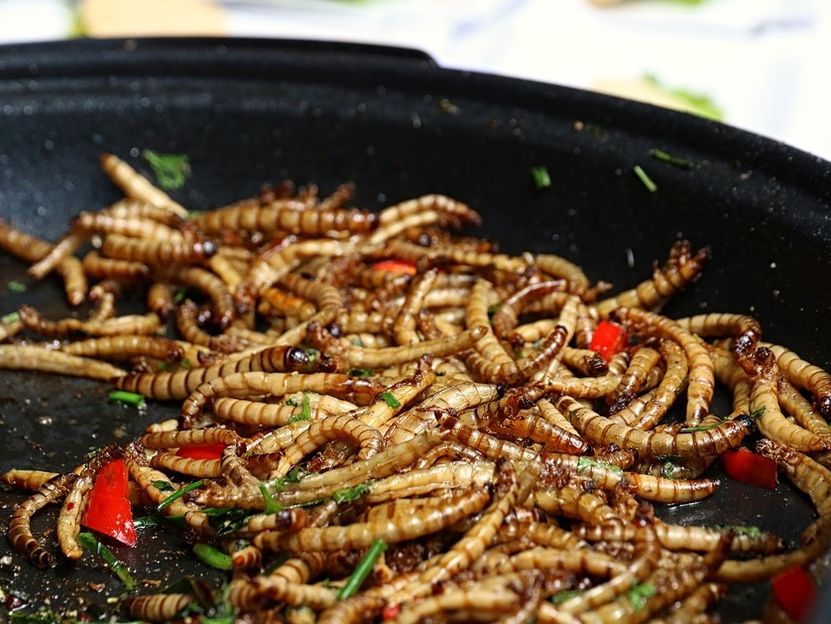
symbol image
katerinavulcova/ Pixabay
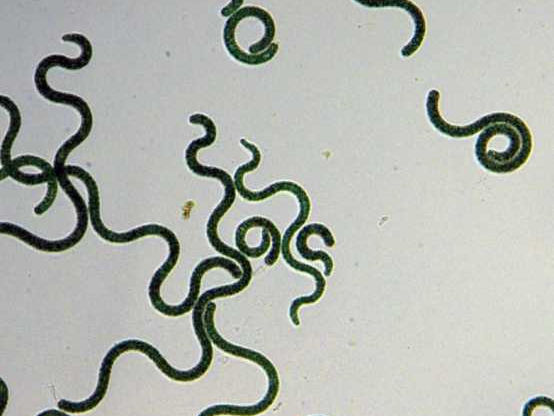
In addition to proteins and lipids, blue-green spirulina microalgae can also be used to produce a valuable colouring agent.
Lukas Böcker/ETH Zürich
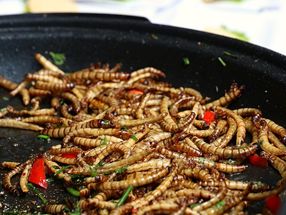
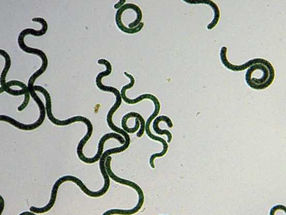
"Insects as food in Europe are certainly somewhat hyped at the moment. You have to be careful not to overestimate this solution in comparison with others," warns Alexander Mathys. A statement you wouldn't expect from an insect researcher. But the ETH professor for sustainable food processing has good arguments for his attitude.
For example, it is unclear whether meat consumption actually decreases at the expense of insects: "Insects are an additional protein source on top in our region. And our food is already rich in protein." However, his sustainability analyses clearly show that we should eat less animal raw materials because of negative environmental and health impacts. "It would make sense to reduce the consumption of meat."
Another aspect that concerns Mathys: "Insects are not as sustainable as we would like them to be at the moment, as long as we breed them on high-quality feed that could be used elsewhere". There are clear restrictions in Europe on the feeding of insects bred as food: Insects must be fed almost exclusively with vegetable raw materials, which are also permitted as animal feed. In practice, in most cases this means mixtures based on rye or wheat flour.
In a joint project with Christian Zurbrügg of Eawag, Alexander Mathys and his doctoral student Moritz Gold now want to feed larvae of the weapon fly with organic waste instead of grain. Insects as a means of better recycling organic waste. "The use of waste as an energy source is one of the lowest forms of use in terms of quality," Mathys notes. Insects can add value to waste by eating it and then becoming food or feed for farm animals themselves.
Food chain in sight
But there are hurdles: Moulds, pathogens, contaminated waste, heavy metals. The central question is what ends up in the food chain. "The safety of the value chain must be guaranteed," says the food engineer. Mathys' team is therefore investigating the biochemical and microbial safety of larvae on organic waste. Moulds or pathogenic bacteria can form dangerous toxins and cause diseases. Certain undesirable constituents in waste can even accumulate in insect larvae and enter the food chain via this route.
In order to better understand these relationships, Michael Kreuzer, ETH Professor of Animal Nutrition, together with Alexander Mathys and Eawag, is carrying out feeding experiments with poultry at the AgroVet knitting yard. The feed for the poultry is based on insect larvae that have fed on municipal waste. Part of the larval food is contaminated in a controlled manner. These larvae are then given to the poultry to eat. After several weeks of feeding, poultry meat and eggs are to be tested for harmful substances.
Alternative to soy
Until then, Michael Kreuzer's doctoral student Maike Heuel evaluates the data from another feeding experiment. These larvae did not feed on valuable cereals, but on waste or pre-consumption waste from catering and cereal by-products such as bran. With this experiment, Kreuzer's research group hopes to find out, among other things, whether soya can be replaced by protein flour and fat from black gunfly larvae. Heuel has divided 50 laying hens into five groups, each of which was given a different feed. The control group received conventional feed, i.e. cereals and soya. The other groups received, in addition to cereals, degreased protein flour and fats from two differently fed insect larval groups.
The researchers do not yet have comprehensive results. "But what we can say now: We can completely replace soy with insect meal without any loss of performance. That means one egg a day, nothing more is possible", Kreuzer is pleased to say. Other parameters, such as egg yolk content, protein composition or fatty acid profile, have not yet been fully analysed.
The replacement of soya is of particular interest for organic farming. "In organic farming, an extraordinary amount of soy is used, even if it is organic soy," says Kreuzer. The reason: No synthetic amino acids may be fed. Therefore, more protein-rich food is needed to meet the needs of laying hens.
Algae on the slaughterhouse
Algae are also rich in protein and make sustainability experts Alexander Mathys rave: "Microalgae are an extremely promising source of proteins and unsaturated fatty acids. In various algae, proteins can account for up to 70 percent of dry matter and provide all the essential amino acids. But there are also disadvantages: the low level of technological maturity, the often lacking scaling and the resulting high costs. Or the green color. It is a major hurdle in the food industry. "A green algae steak can be amusing for once. But in the long term we have to deliver flexible solutions," says Mathys.
If the colour is a disadvantage with green algae, it is a valuable commodity with spirulina microalgae: Spirulina blue is very high-quality and can be sold at high prices. In order not to damage it, however, it must be extracted very gently. This step is the beginning of a so-called cascade extraction to realize closed algae-based biorefineries. The Mathys group is also currently working on various doctoral projects in this field.
Once the sensitive dye has been obtained, it may be processed more strongly, at higher temperatures for example. In this way the total protein can be extracted. "This can be used, for example, to produce meat analogues," says Mathys with a view to his cooperation with the start-up company planted. Then it is the turn of the lipids, which are often even harder to take. Unsaturated fatty acids are of particular interest for lipids because of their health effects. The last remainder can be used as energy, carbon source or fertilizer.
The individual products are analysed in detail by Mathys' team. "This paves the way for integrating these products into food," says Mathys. It could just be more than just a new hype.
Note: This article has been translated using a computer system without human intervention. LUMITOS offers these automatic translations to present a wider range of current news. Since this article has been translated with automatic translation, it is possible that it contains errors in vocabulary, syntax or grammar. The original article in German can be found here.



